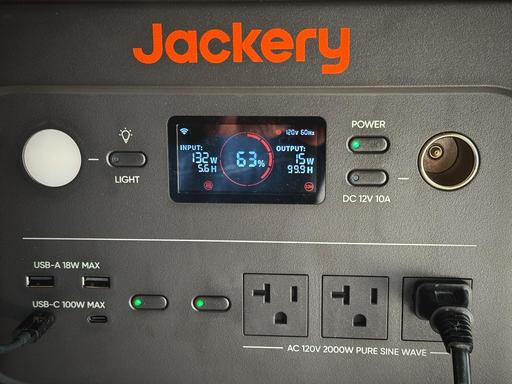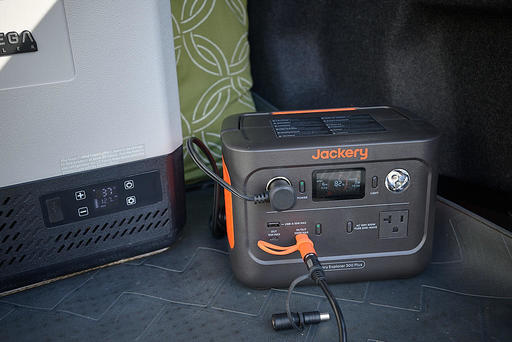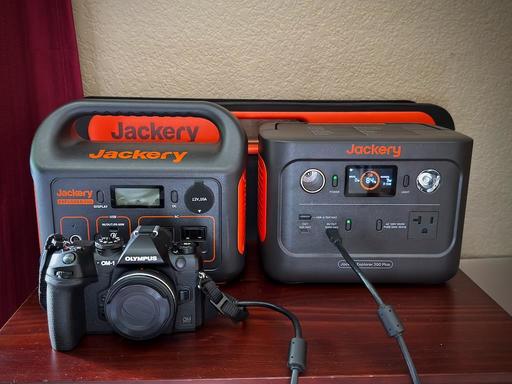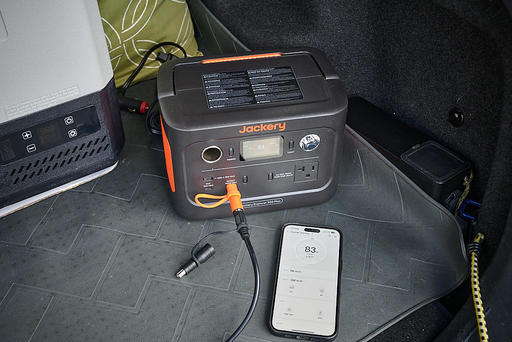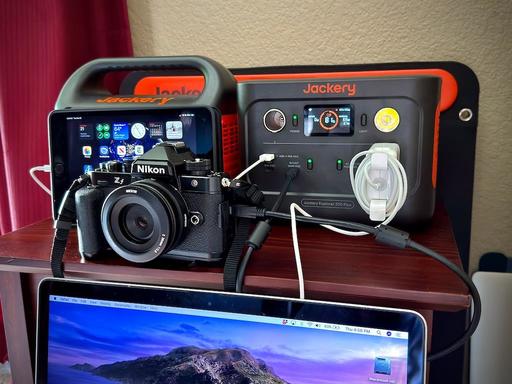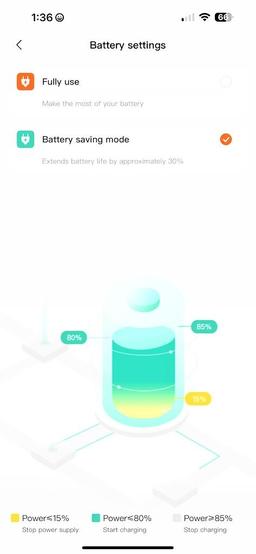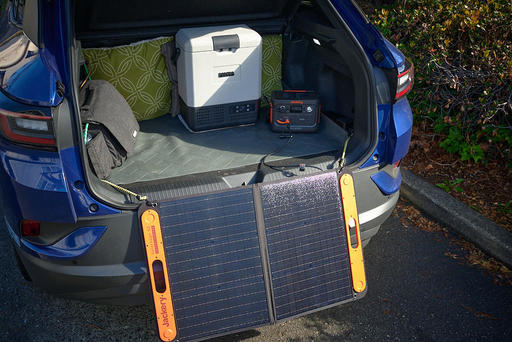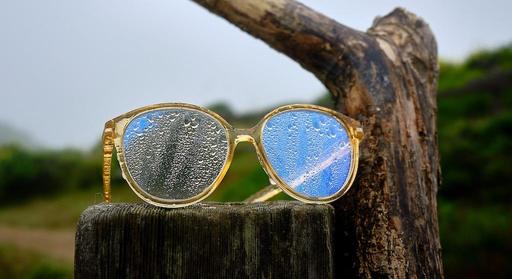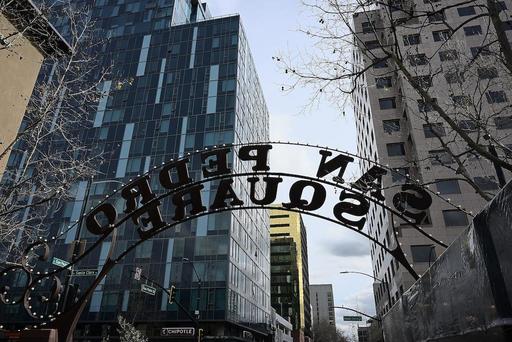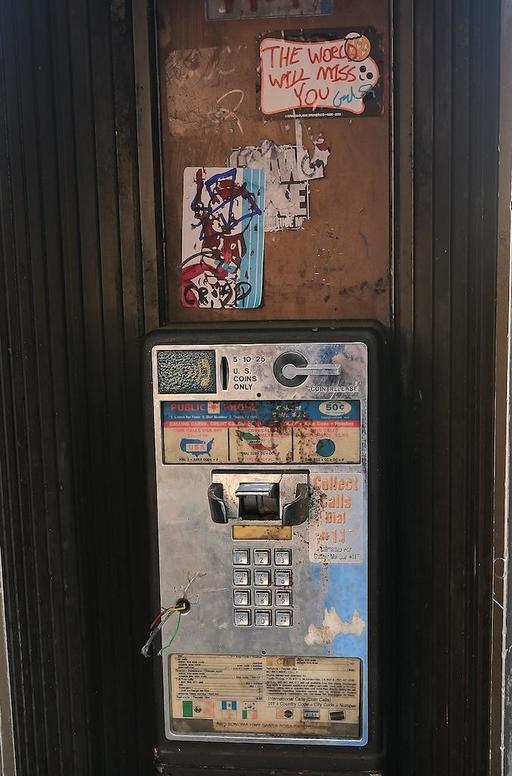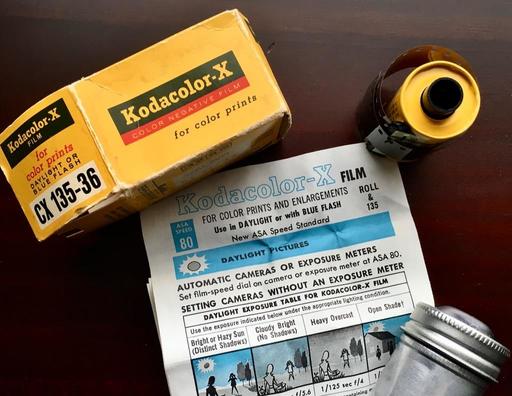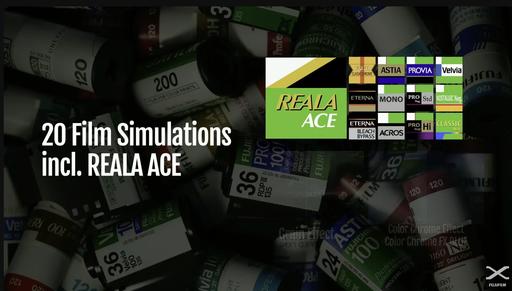This is The Digital Story Podcast #940, March 26, 2024. Today's theme is "Getting Serious About Portable Power." I'm Derrick Story.
Opening Monologue
Cameras, laptops, drones, lighting - they all require power, and sometimes all at once. When we're at home, it's just a matter of finding enough outlets. But on the road, that can be more challenging in motel rooms. And if you're sharing space with someone, they're probably saying, "Hey, where do I plug my phone in?" And then, how about out in the field? Yes, we all need power, regardless of where we are. And this week, I'm going to tell you how to get it. I hope you enjoy the show.
Tune-In Via Your Favorite Podcast App!
Apple Podcasts -- Spotify Podcasts -- Stitcher
Podbean Podcasts -- Podbay FM -- Tune In
Getting Serious About Portable Power
I started on this project years ago. As soon as I realized that I would need watts and watts of power on the road, I began looking for solutions.
At first, there were small, pocket-sized power banks with USB-A outlets. They were fine for topping off my iPhone, but they weren't powerful enough for multiple iPad recharges or even camera batteries. But I packed one or two anyway, just in case I found myself in a pinch.
Then, in the summer of 2021, I bought a Jackery Explorer 300 Portable Power Station and a companion SolarSaga 100W solar panel. My road trips were suddenly improved.
The Explorer 300 could power up to 6 devices at once via USB-A, USB-C, 12V carport, and two 110V AC outlets. I was able to power my laptop, recharge camera batteries, and keep all of my mobile devices topped off.
If I was camping, I could use the solar panel to refuel the Explorer 300, feeling like I had endless energy regardless of my location.
Everything changes with power. Now I had plenty of campsite lighting at night. I could ditch the ice chest and replace it with a portable refrigerator, and I could work and play the way I wanted, not worrying about draining little batteries that I couldn't refuel.
For workshops, I could ditch the cumbersome extension cords and let participants plug their laptops into the Explorer 300. This worked so well, that I bought a second unit for more flexibility.
And if motel rooms hid their only available outlet behind a 200 pound dresser, I didn't care. I would grab the Explorer 300 from the car and keep on chargin'. Like I said earlier, everything changed.
Not Just for the Road
When I returned to the studio, I would put everything away until my next road trip. That was fine, but it seemed like a missed opportunity. I had a south-facing sliding door that opened to my patio there, and it received hours of potent sunlight most of the year. Why not put that solar panel and power station to work? After all, I'm using solar panels on the roof at home, and my electricity bill is practically non-existent.
I expanded my system a little bit, and power generation evolved from a convenience on the road to a hobby. With just a few adjustments at the studio, I was able to reduce my energy consumption by 30 percent from the grid. I'd set the solar panel out in the morning and connect it to a Jackery power station (1 minute), then charge all of my devices, laptop, lamps, and even TV from my mini power station.
To give you an idea of the draw I needed, here's a list of my common devices now running off solar.
- Nikon Zf - 9 watts to charge.
- OM System OM-1 - 9 watts to charge.
- iPad mini - 11 watts to charge.
- MacBook Pro 14.2" M1 - 85 watts to power.
- Desk Lamp with LED bulb - 15 watts to power.
- LCD TV - 90 watts to power.
- Stereo System - 35 watts to power.
- Occilating Fan - 25 watts to power.
- BODEGAcooler Mini 12V Portable Freezer P8 - 35 watts to run.
With just a couple power stations and 100 watt panel, I could maintain all of these devices without ever having to plug them into the wall. And if there was a power outage, I have my entire backup system designed and ready to go.
Better Technology, More Power
Recently, Jackery introduced the Explorer 300 Plus with an array of improvements including lithium iron phosphate batteries (LFP), faster charging times, improved LCD display, WiFi, Bluetooth, a companion mobile app, and more control over the settings of the unit - all for about the same price as the original Explorer 300.
The new LFP battery has a longer lifespan, safe nature, and high efficiency. The battery is comprised of four main components: a positive electrode, a negative electrode, an electrolyte, and lithium iron phosphate (LFP). They can charge and discharge between 2000 to 4000 times before losing 30 percent of their original capacity. And they have a low self-discharge rate, meaning they do not lose the stored charge when kept in ideal conditions.
The two current Jackery Power Stations that I recommend for photographers are the Explorer 300 Plus ($299 before discount) - 288 Wh, 3,000 charge cycles, 300 W maximum output - and the Explorer 1000 Plus Portable Power Station ($999 before discounts) - 1,264 Wh, 4,000 charge cycles, 2,000 W output with 4,000 W peak.
My favorite solar panel is the SolarSaga 100 W ($299 before discounts). It's very easy to transport, folds in half so it fits in the back of the car, has a high efficiency, and even includes USB-A and USC-C ports so you can charge directly off the panel if you don't have a power station.
More Resources
I've published Jackery Explorer 300 Plus Review - Power Your Roadtrips that features lots of pictures and real-life experiences, including my solar setup when camping.
Jackery almost always has a good sale going. But if there's something you want that isn't on sale, use code: JADEAL for a 10 percent discount. I have a Jackery ad tile in the second column of TheDigitalStory.com that includes the discount code. Just click on the tile to take you over to their site.
I've tested other power generators too. And I'll be publishing reviews on TheDigitalStory. But Jackery is my favorite. High-quality materials, great design, trouble-free, and easy to use. Their tech support is good. And they provide you with extended warranties when you buy on their site.
Final Thoughts
It's a wonderful feeling to be energy-independent. I feel like I can road trip anywhere, and be just fine if the grid goes down. And in this age of power-hungry devices, you can save money as well in the long run.
Fujifilm US cancels suspicious X100VI Limited Edition orders. How to order the camera
You can read the entire story on DPReview.com.
Photographing the 2024 Total Solar Eclipse
You can read the entire story on LensRentals.com.
Virtual Camera Club News
The Nimble Photographer Newsletter is now publishing every Thursday. Readers will enjoy a variety of content spanning from short photo essays, to commentary on weekly events, to reviews of the latest and coolest photo gear.
TDS Workshops! - You can sign up for available workshops by visiting The Nimble Photographer. Inner Circle Members receive a 10-percent discount on all events.
Inner Circle Members: A big thanks to those who support our podcast and our efforts! We are having a blast at our new Inner Circle hangout, the private group I've set up at DerrickStoryOnline. We'd love it if you join us. You can become an Inner Circle Member by signing up at our Patreon site. You will automatically be added to the new hangout.
Great Photography Articles on Live View - If you check out our publication and appreciate what you see, be sure to follow us and clap for those authors. You can find us at medium.com/live-view.
If you're interested in writing for Live View, drop me a line at dstory@gmail.com.
The New Donation Kit for Carefree Shipping of Found Film Cameras - If you've discovered a film camera that's no longer being used, our new Donation Kit makes it easy to pack and ship. Just visit the Contact Form on thenimblephotographer.com, click the box next to Donating a Film Camera, and let me know what you have. In your note, be sure to include your shipping address.
Affiliate Links - The links to some products in this podcast contain an affiliate code that credits The Digital Story for any purchases made from B&H Photo and Amazon via that click-through. Depending on the purchase, we may receive some financial compensation.
Red River Paper - And finally, be sure to visit our friends at Red River Paper for all of your inkjet supply needs.
See you next week!
You can share your thoughts at the TDS Facebook page, where I'll post this story for discussion.
